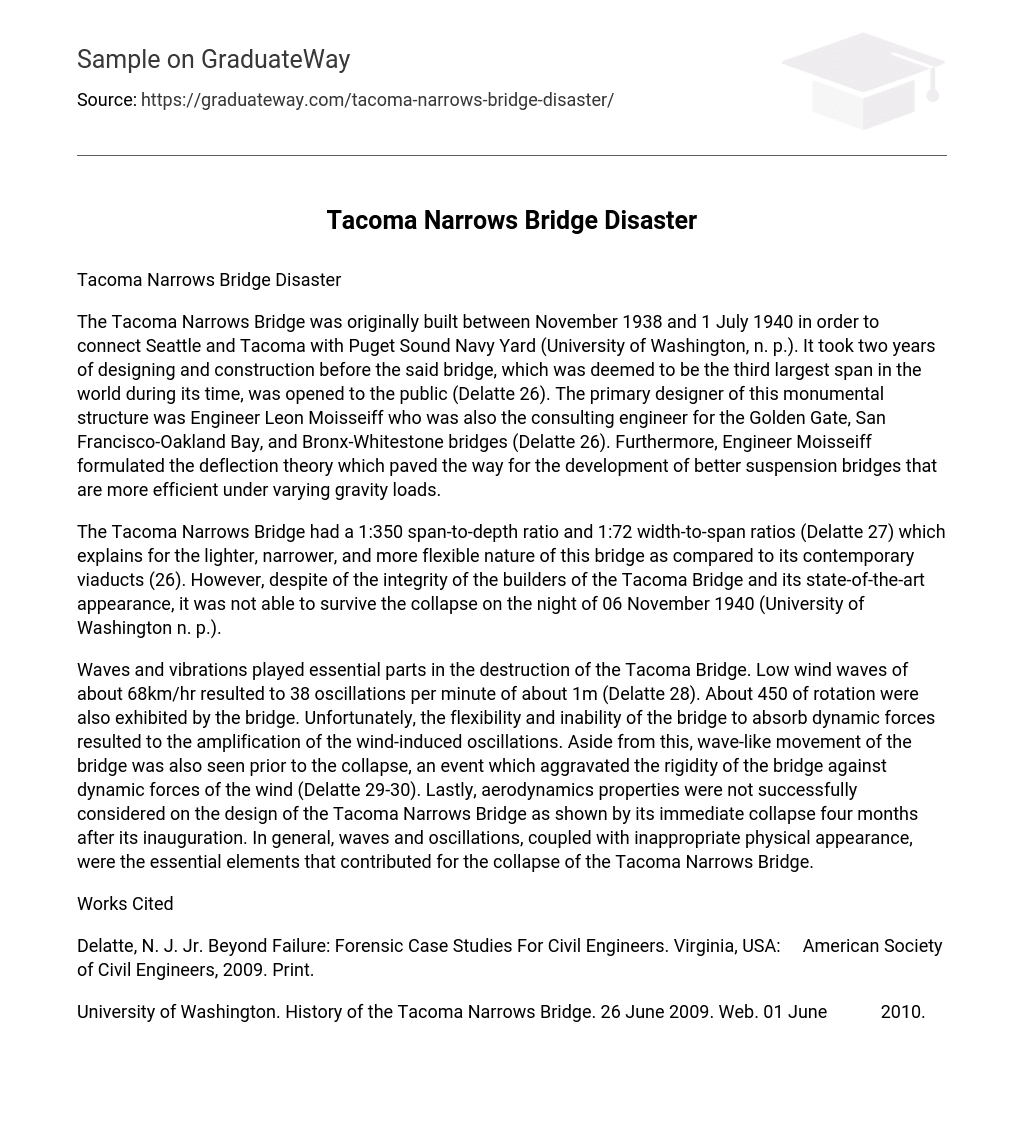The Tacoma Narrows Bridge was originally built between November 1938 and 1 July 1940 in order to connect Seattle and Tacoma with Puget Sound Navy Yard (University of Washington, n. p.). It took two years of designing and construction before the said bridge, which was deemed to be the third largest span in the world during its time, was opened to the public (Delatte 26). The primary designer of this monumental structure was Engineer Leon Moisseiff who was also the consulting engineer for the Golden Gate, San Francisco-Oakland Bay, and Bronx-Whitestone bridges (Delatte 26). Furthermore, Engineer Moisseiff formulated the deflection theory which paved the way for the development of better suspension bridges that are more efficient under varying gravity loads.
The Tacoma Narrows Bridge had a 1:350 span-to-depth ratio and 1:72 width-to-span ratios (Delatte 27) which explains for the lighter, narrower, and more flexible nature of this bridge as compared to its contemporary viaducts (26). However, despite of the integrity of the builders of the Tacoma Bridge and its state-of-the-art appearance, it was not able to survive the collapse on the night of 06 November 1940 (University of Washington n. p.).
Waves and vibrations played essential parts in the destruction of the Tacoma Bridge. Low wind waves of about 68km/hr resulted to 38 oscillations per minute of about 1m (Delatte 28). About 450 of rotation were also exhibited by the bridge. Unfortunately, the flexibility and inability of the bridge to absorb dynamic forces resulted to the amplification of the wind-induced oscillations. Aside from this, wave-like movement of the bridge was also seen prior to the collapse, an event which aggravated the rigidity of the bridge against dynamic forces of the wind (Delatte 29-30). Lastly, aerodynamics properties were not successfully considered on the design of the Tacoma Narrows Bridge as shown by its immediate collapse four months after its inauguration. In general, waves and oscillations, coupled with inappropriate physical appearance, were the essential elements that contributed for the collapse of the Tacoma Narrows Bridge.
Works Cited
Delatte, N. J. Jr. Beyond Failure: Forensic Case Studies For Civil Engineers. Virginia, USA: American Society of Civil Engineers, 2009. Print.
University of Washington. History of the Tacoma Narrows Bridge. 26 June 2009. Web. 01 June 2010.





